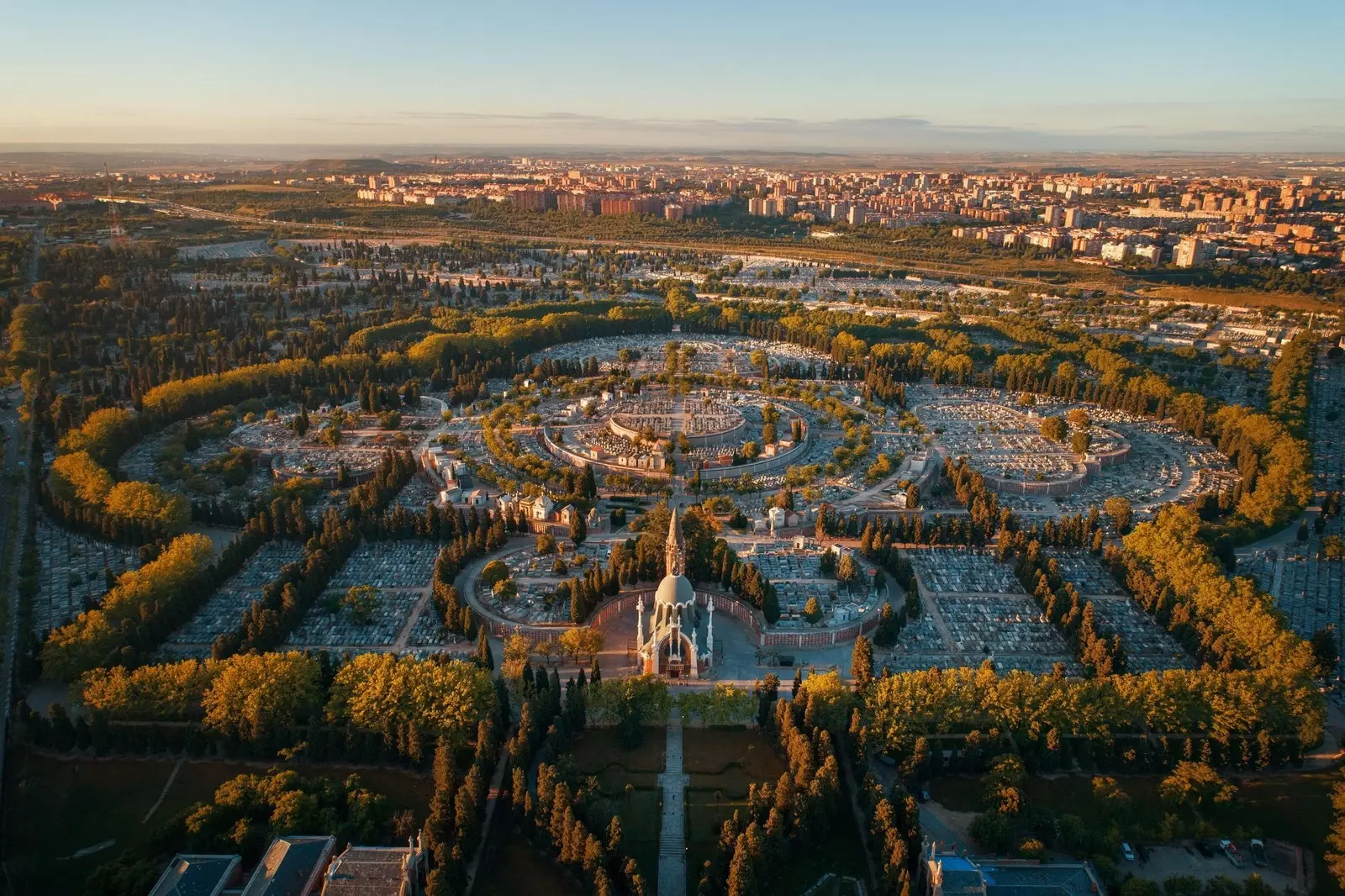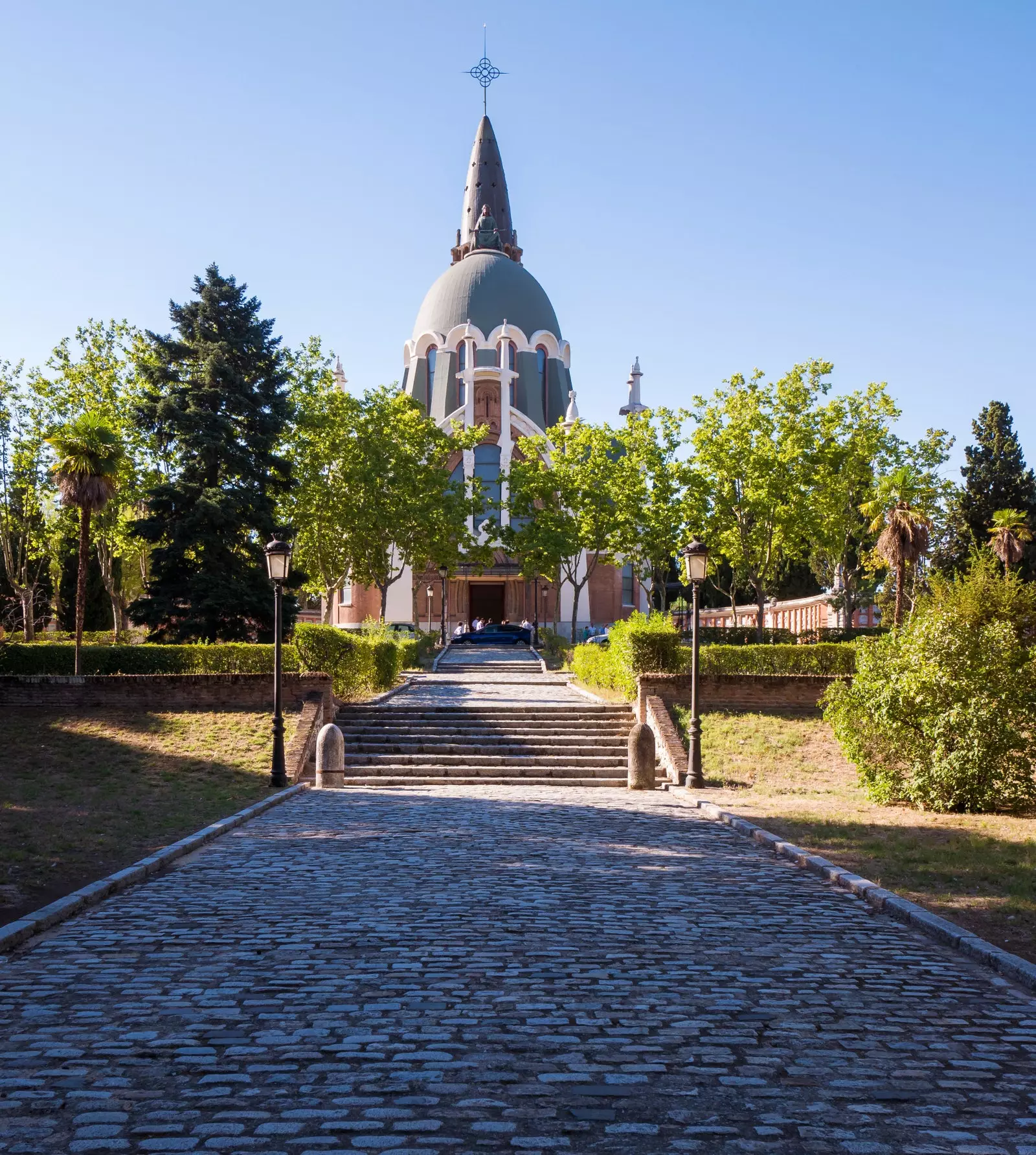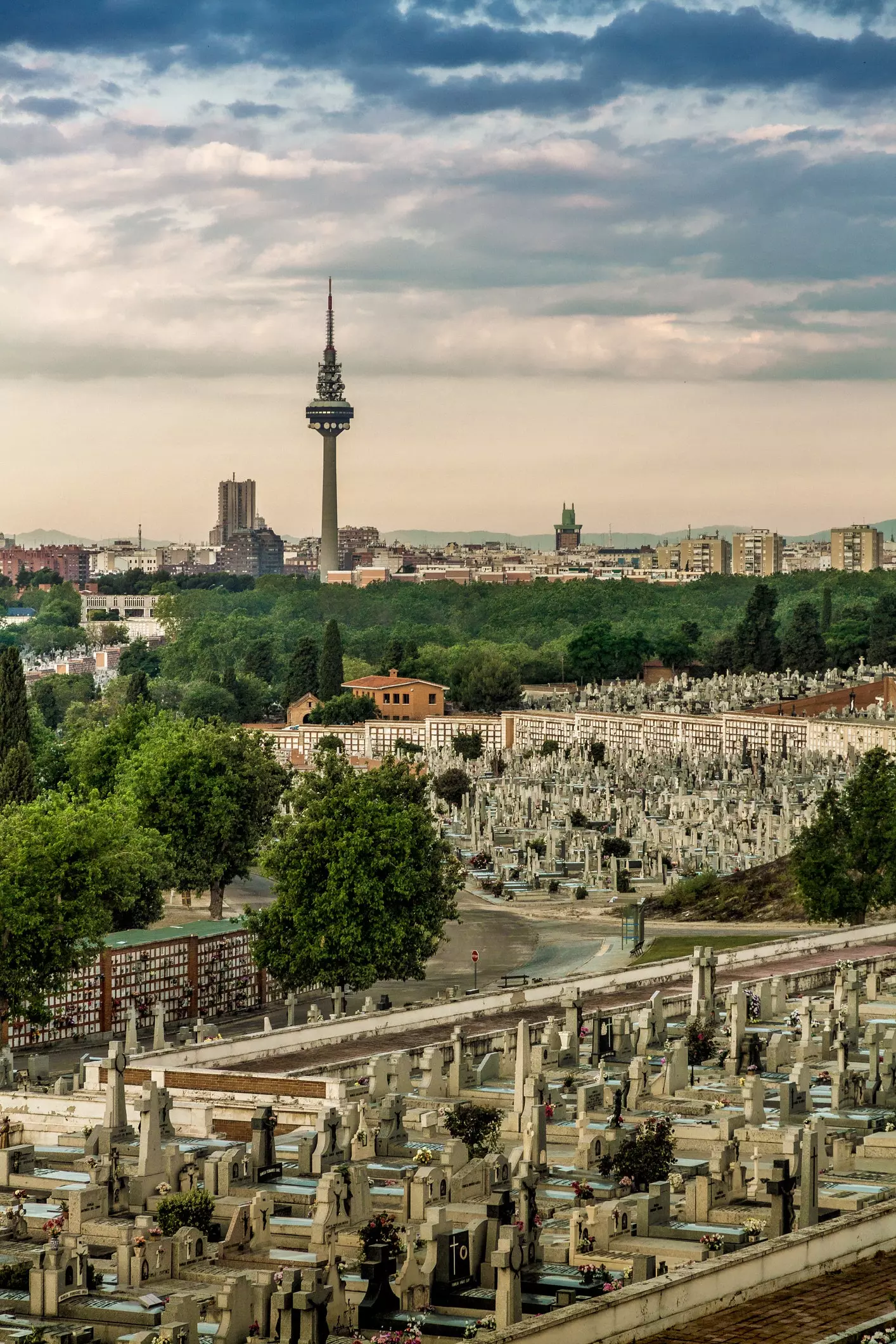
Almudena Cemetery: a route through its illustrious tombs
With 120 hectares extension, the Almudena Cemetery supposed one of the largest necropolises in Europe . Since it was inaugurated in 1884 in the Madrid neighborhood of Ventas, some five million people have been buried there. Depending on their economic and social status, their remains can rest in lost niches among its immensities or spectacular mausoleums at the foot of the main avenues.
We are about to discover the tombs of some of the main celebrities who lie there (artists, politicians, writers, scientists...) on a free route based on the guided tours organized from Cultural Heritage Madrid . Ideally, we should get a map of the cemetery, either the general one or, even better, the one with the thematic routes . We can get them at the offices at the main entrance, some of the flower stalls or download them in PDF on their website.
Our route begins at main porch , in the corner between the Daroca and Thirteen Roses avenues (La Elipa metro) . After passing through its doors we will see the chapel in front of us. Just behind, on a wall of niches, we will see if we look closely at the Flores family pantheon (next to the 6-P barracks, which is reached by skirting behind). There lie the singer and dancer Lola Flores, her husband Antonio González 'El Pescaílla' and her son Antonio Flores . Bordering the pantheon we will discover some beautiful statues with Lola dancing while her son plays the guitar.
Returning to the street through which we entered, between the barracks 5-P and 2-PF , are the tombs of two mayors of Madrid: Alberto Aguilera (with a striking monument where his bust stands out, on the side attached to the chapel) and Enrique Tierno Galvan (across the street, in a smaller grave). Not far from Galván is the tomb of the singer and actress Estrellita Castro . Returning to the street that separates both mayors, we continue to the right (if we look directly at the chapel) and then turn the third to the left, until the 1-PF barracks. There we will see the grave of the Ramón y Cajal family, where the Nobel Prize in Medicine rests with his family.

Almudena Cemetery: a route through its illustrious tombs
We return to the street we came from, which runs through the interior of the cemetery parallel to Avenida de Daroca, to cross it until we find a portico on the left that gives access to the Civil Cemetery, which we will talk about later. Before going there, we have several curious tombs to visit in the vicinity of this gate. Mainly that of Benito Perez Galdos , who, surrounded by ostentatious mausoleums, rests with his family in a simple grave in barracks 2-B. In that same barracks is the tomb of another famous writer: Damaso Alonso . Nearby also lies the child Pedro Regalado (barrack 5-A) , which will go down in history for being the first person to be buried in the religious cemetery, just 14 months old.
Near the Crematorium there are two other graves worth mentioning. The poet and Nobel Prize for Literature Vicente Aleixandre (Barracks 67). And that of the singer and main composer of the pop rock group Los Secretos, Henry Urquijo, who rests with his family in barracks 341.
We return to the portico to now cross the Civil Cemetery, separated from the Religious Cemetery by the Avenida de Daroca (the old Vicálvaro road). In its day it was inaugurated for non-Catholic deceased, according to Wikipedia, to bury and keep memory " of liberals, renovators, non-conformists and people contrary to the Catholic rite (both by ideology and by confession), and of others sectors of Spanish life and thought (in addition to Freemasons and Protestants)”. In this way we will see the remains of three of the four presidents of the First Republic , several socialist and communist leaders, freethinkers, intellectuals, artists and various members of the Institución Libre de Enseñanza . This also explains the existence of many graves of Jewish people, despite the fact that they have their own cemetery attached to it.
As soon as you enter, to the left, is the simple tomb in white marble of Dolores Ibárruri 'La Pasionaria', historical leader of the PCE . Next to it, in a much more pharaonic way, the original and spectacular mausoleum of Pablo Iglesias, founder of the PSOE and UGT . Straight ahead, to our right, the mausoleums of the Presidents of the First Republic Nicolás Salmerón and Francisco Pi y Margall . They are joined a little further on, to the left, by the also President of the First Republic Estanislao Figueras.
Likewise, in this small cemetery rests the pedagogue Francisco Giner de los Ríos, the writer Pío Baroja, the socialist leader Julián Besteiro, the urban planner Arturo Soria, the zoologist Antonio Machado Núñez or the sculptor Emiliano Barral , author of many of the statues in this cemetery (that of Pablo Iglesias among them).
The walls of the Almudena Cemetery (formerly called Cementerio del Este) were used during and after the Civil War to shoot almost 3,000 people . That is why we will also see various commemorative plaques , like the one reminiscent of the “ reprisals of the Franco regime ” in the Civil Cemetery (continuing straight ahead as you enter until the final wall) or the ** sadly famous Thirteen Roses ** (group of young women shot shortly after the end of the war), entering from its homonymous avenue through the Portico of O'Donnell on the left (barrack 119). Other plaques in this cemetery, such as those containing the names of the Republicans shot by the Franco regime or those that reproduced verses of the poet Miguel Hernández as part of the Historical Memorial, they have recently been withdrawn (with the consequent controversy) by the current city government.

View of Madrid from the Almudena Cemetery
